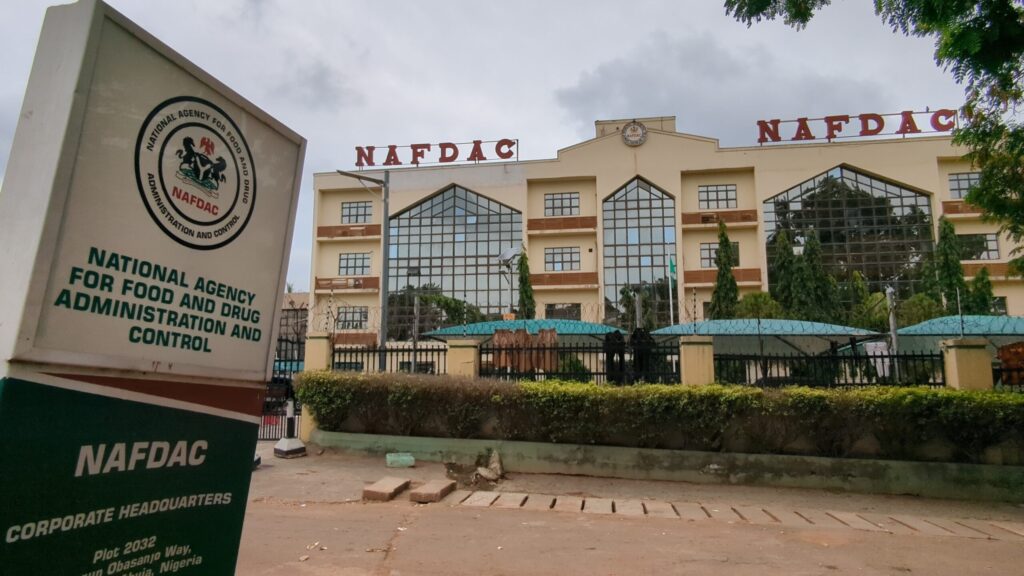
The ban on the usage of styrofoam and single use plastic by government of Lagos, no doubt, has sent a shocking wave across the state, especially as many have come to accept them as the cheapest means of packaging food despite the environmental nuisance they constitute.
The state government, in announcing the ban, said the decision was reached following the menace, which the single use plastics, especially the non-biogradeable styrofoams were causing on the environment.
The Commissioner for Environment and Water Resources, Tokunbo Wahab, while announcing the ban, stated that most drainage channels in the state are daily clogged by styrofoams following their indiscriminate distribution and usage despite the regular cleaning and evacuation of the drains with humongous amounts.
He said the largest chunk of waste across major roads and markets, which LAWMA contends with daily is styrofoams.
The commissioner added that the state government cannot fold its hands and watch the continued desecration of its environment especially for a coastal city.
Wahab has subsequently directed the State Waste Management Authority (LAWMA) and the Kick Against Indiscipline to immediately commence the implementation of the ban, asking the two agencies to clamp down on all production companies and distribution outlets of Styrofoams in the state to prevent further distribution.
Wahab explained that the state took the action, relying on several enabling laws and regulations such as the National Environmental (Sanitation and Waste Control) Regulation 2009, which was established pursuant to NESREA Act that prohibits and specifically bans single use plastic in the country but has not been enforced.
Other laws, according to Wahab, include the 2017 State Environmental Management and Protection Law, which states under section 56(I) (y) “prevent, stop or discontinue any activity or omission, which is likely to cause harm or has caused harm to human health or the environment.”
The commissioner advised producers, distributors and end-users of these styrofoam packs to take the ban seriously and find alternatives or risk heavy fines, and other penalties including sealing of their premises.
He warned that they could also be made to bear the costof the daily cleanup of their products from the roads and drainage channels, which runs into millions of naira daily.
Following the announcement, there have been mixed feelings about the action of government. Many, who are into the business of producing and marketing styrofoam plates and single use platforms are not happy, including residents who believe the decision would negatively impact their pockets.
On the other hand, those who are environment sustainability conscious praised Lagos State government for taking the action as it was in the collective interest of all residents of the state.
Surprisingly, days after, like a wind fire, the ban on styrofoams and single use plastics started spreading across Nigeria.
After Lagos State announced the ban, Abia State followed when on January 27, it banned single-use plastics. Oyo State is already working in that direction as a member of the state assembly, SanjoAdedoyin co-sponsored a motion with Adebayo Babajide on the need to ban usage of Styrofoam for food service, storage and other related usage in Oyo State.
A resident, Tunde Adejobi, said that the ban is said to be in the collective interest of all but the action was too hasty.
He also said that some residents have started adjusting, but buying food in nylon and re-use plastics.
He, however, fear that some residents after buying food in re-use plastic throw them away which has its negative implication and a return to what the state government wants to prevent.
One of the manufacturers of styrofoams, who pleaded anonymity, said the government action was not only harsh but also unfair as it was never engaged before the ban was pronounced.
He said the issue majorly was that of poor disposable habit among residents, which the government has not taken time to correct.
He added that if the government does not work on the residents to engage in appropriate disposal of waste, whatever alternative adopted would also lead to the clogging of the drainages and littering of roads, which the government complained about.
He revealed that aside the investment in equipment, materials worth millions of dollars waiting to be processed or processed are in the factory and warehouse and the government just announced the ban without engaging any one.
“This is despite we sourced for the dollars we used in buying the raw materials and not that we got support from government to get dollars to buy the items. I am not even talking about the likely job losses.”
He, however, said if the government had engaged the producers they were ready to support government in clearing and cleaning the drainages clogged by styrofoams and single use plastics.
Commenting also, a lecturer at the University of Lagos, Dr Temilola Oluseyi, whose interest is Environmental Chemistry, said that the ban is the right step to be taken by the government, but appropriate enlightenment and engagement were not done.
“It should not be an overnight event.I am sure that the relevant government agency has conducted thorough research on the environmental impact of styrofoam containers, and already have information on the harm to human health and environment.
“The outcome of this should lead to the development of a comprehensive communication strategy that clearly outlines the reasons behind the ban and the benefits it will bring to the man and the environment.
“Subsequently, a significant public awareness campaign ought to be initiated well ahead of the official announcement of the prohibition. Since almost every adult has a smartphone with internet access these days, public awareness campaigns could include television and radio advertisement, educational programmes in schools and communities, and announcements and campaigns on social media platforms like Facebook, Instagram, Twitter, Telegram, and WhatsApp channels (X) to reach as many people as possible.”
According to her, it is important to communicate the benefits of the ban, the urgency of addressing plastic pollution, and its health effects through succinct and persuasive messaging that are delivered in both local and English languages.
“Afterwards, in order to get feedback and address concerns, the policymakers ought to have interacted with a range of stakeholders, including companies that produce, import, or sell these packaging materials, food and environmental scientists, community and market leaders, owners of food retail outlets, and event planners.
“Each stakeholder feels more inclusive and accountable when working together in this collaborative manner. The opinions of various sectors will be taken into consideration during this consultation and engagement to make sure the ban is workable and takes into account the needs of all parties involved.
“Information about sustainable practices and substitute materials should be included in such a policy.There should be an investigation on if there are any environmentally friendly alternatives to the Styrofoam containers that are being phased out by collaborating with researchers from manufacturers and universities. Innovative research holds the key to solving many of our current issues.
“Additionally, the government may want to think about providing incentives to companies (such as fast food restaurants) and individuals who take an active role in cutting back on plastic use or embracing sustainable practices. In order to encourage others to adopt similar positive behaviours, these actions can be recognised and rewarded.”
After the ban some residents have started using nylon as means of packaging foods in place of styrofoam. Some of them could not pay for reuse plastic sold from N100.
Oluseyi said eating food that is packed inside nylon poses several health risks due to the potential release of harmful chemicals.
She added that nylon is a type of synthetic polymer that may contain additives or residues from the manufacturing process, so eating food that has been packaged in nylon presents a plethora of risks.
“Toxic materials including plasticisers, stabilisers, and colourants that nylon may contain can contaminate food by releasing hazardous chemicals when it comes into contact with it, particularly when heated.
“These substances might be harmful to man’s health, especially if someone consumes them over time. Certain substances found in nylon, such as bisphenol compounds and phthalates, are recognised to be endocrine disruptors. These chemicals found in nylon may have negative effects on the reproductive and endocrine systems as well as disrupt the body’s hormonal balance.
“There is a chance that some of the ingredients used to make nylon are carcinogenic or could produce carcinogenic by-products. Cancer risk may rise with prolonged exposure to these substances, such as through eating food contaminated by chemicals found in nylon.”
Oluseyi said there are alternatives to Styrofoam and single use plastics that residents could adopt that are seco-friendly.
“These alternatives are often more sustainable. biodegradable, do not pose any risk to humans, and have less environmental impact. In ancient times before civilisation, food had been packed in leaves and even still today, the bean cake (moinmoin) is a delicacy prepared in leaves and ofada rice. Even though, due to modernisation, they are being made in plastics and nylon, which is another potential route of eating toxic chemicals with food, when they leach out of the plastic into the food during cooking.
“The leaves when they are discarded do not pose any threat to the environment as they are biodegradable and decompose in the environment.
Other options include biodegradable plastics. These are plastics made from plant-based materials such as corn starch, sugarcane or potato starch.
“These plastics break down more easily than the traditional plastics. Another option is paper containers useful for making items like take-out boxes and cups. Some innovative solutions involve edible packaging made from materials such as seaweed or starch. These can be eaten along with the food or easily composted. Packaging made from cornstarch is a biodegradable option. It can be used for various types of food containers, including utensils and cups.
“Apart from food containers, these biodegradable materials can be used to make disposable cups, spoons, forks, chopsticks and straws for drinks.When considering alternatives, it is essential to assess the entire lifecycle of the product, including the cost of production, use, and final disposal.”
“Additionally, local composting facilities and recycling capabilities should be considered to ensure that the chosen materials align with existing waste management systems and do not present a burden to the existing waste problems we have in the environment.
“The government can promote any of these alternatives derived from biomass and collaborate with scientists and engineers in tertiary institutions to fund innovative research that can explore other materials like cassava peels, corn hobs and rice husks among other.”
Of note is that after days announcing the ban, the state government gave a three-week grace before it starts enforcing the ban, which ends this week.













